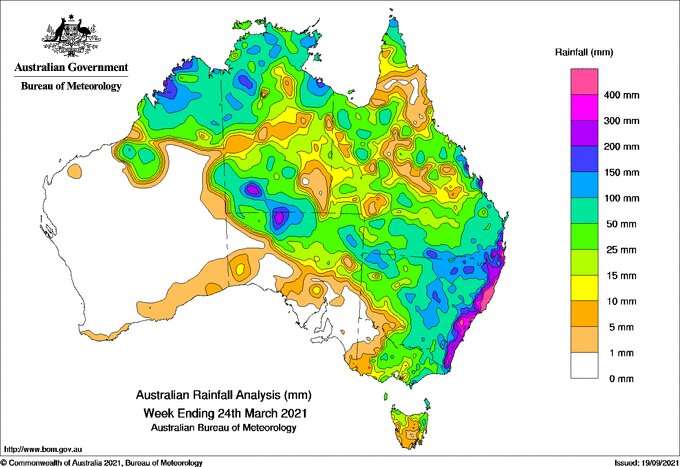To limit future flooding in Sydney, COP26 pledges need action

It's easy to get lost in the numbers from COP26. For two weeks, world leaders gathered to discuss emissions reduction targets for the next five years.
But amongst the personalities and press conferences, we may forget that our greenhouse gas emissions have real and disastrous implications.
The focus of COP26 was on what changes we need to make to keep global warming limited a possible increase of 1.5 degrees Celsius, 2 degrees Celsius or even 3 degrees Celsius relative to pre-industrial levels.
However, Australia's climate is already changing with a pronounced increase in heat waves on land and in our oceans. For extreme rainfall events, the trends are more varied and it's difficult to determine the role of climate change in damaging weather systems that lead to flooding.
Extreme rainfall is notoriously difficult to accurately simulate in climate models, relative to other climate extremes like heat waves. This because of the chaotic nature and relatively small scale of storms. Global climate models can only simulate objects that are at least 250km across, while a thunderstorm is usually about 25km.
However, by switching the focus from individual storms to the large-scale flow of water vapor around the globe—in which thunderstorms are usually embedded—we can produce more robust predictions.
Large-scale extreme rainfall and floods in Australia typically occur when wet tropical air intrudes south. Like using a firehose on a veggie patch, the southern states aren't accustomed to such vast amounts of water.
We are seeing a perfect example of such a weather event over huge areas of Australia. Alice Springs recorded 100.2mm of rain in less than 24 hours on the 10th of November and there are flood warnings for most states and territories.
Another recent example of such an event occurred in March this year.
Between the 17th and 24th of March 2021, Eastern Australia experienced heavy rainfall and widespread flooding. Sydney received 85 percent of its average March rainfall in 24 hours during an atmospheric river that channeled tropical moisture over an already soaked NSW.
Tragically, three people died and the damage bill has exceeded $A650 million with thousands of insurance claims still unresolved.
The daily maximum amount of water vapor that passed over Sydney during this event was high but not unusual. However, the 10-day average water vapor flowing over Sydney was the third-highest since 1980.
The persistent and widespread rainfall that preceded the atmospheric river was due to a blocking high-pressure system in the Tasman Sea which drove moist air from the Tasman and Coral Seas over the east coast.
Like a saturated sponge, when the heavy rain from the atmospheric river fell, the soil couldn't absorb any more water and NSW flooded.
Researchers from the Australian Research Council Centre of Excellence for Climate Extremes and University of Melbourne teamed up with a colleague from Indiana University and the Lawrence Berkeley National Lab in the U.S. to understand how the likelihood of these kinds of events might change in a warmer climate.
We used the latest generation of global climate models and advanced statistical modeling to project water vapor transport over Sydney under both high and moderate emissions scenarios.
Our new study, published in Geophysical Research Letters, found that the probability of events that are of similar magnitude to the weather system that led to the March 2021 flooding will likely increase by 80 percent by the end of the 21st Century under both high and moderate emissions scenarios.
As well as an increase in the likelihood of events similar to the March 2021 event, we also found that the number of consecutive days with high water vapor transport over Sydney was projected to increase. This puts Sydney at a higher risk of regular flooding under moderate and high emissions scenarios.
The 'moderate' emissions scenario used in this study is equivalent to 2.5 to 3 degrees Celsius of global warming by the end of this century, while the 'high' emissions scenario equates to about 5 degrees Celsius of global warming relative to pre-industrial levels.
Limiting the chance of widespread, damaging extreme rainfall and flooding is why it is so important to reduce our greenhouse gas emissions.
Climate Action Tracker has warned that the short term COP26 pledges for the next decade won't limit warming to 1.5 degrees Celsius or even 2 degrees Celsius, but are only enough to limit global temperatures rises to 2.4 degrees Celsius, which would have devastating consequences for the climate. It is crucially important then that we keep pressure on our leaders to deliver meaningful and sustained cuts to emissions.
More information: Kimberley J. Reid et al, Extreme Water Vapor Transport during the March 2021 Sydney Floods in the Context of Climate Projections, Geophysical Research Letters (2021). DOI: 10.1029/2021GL095335
Journal information: Geophysical Research Letters
Provided by University of Melbourne




















